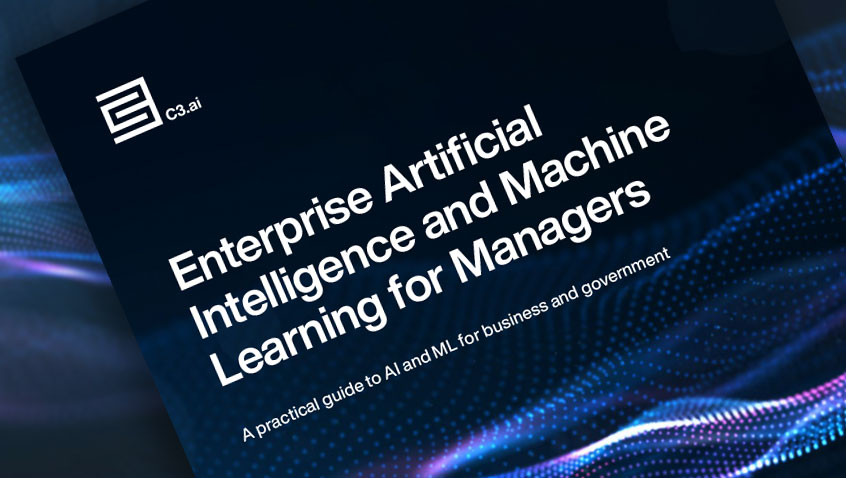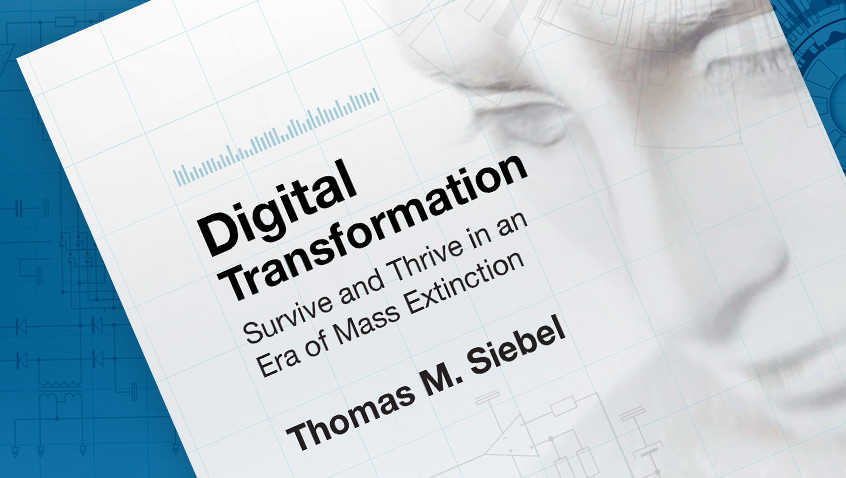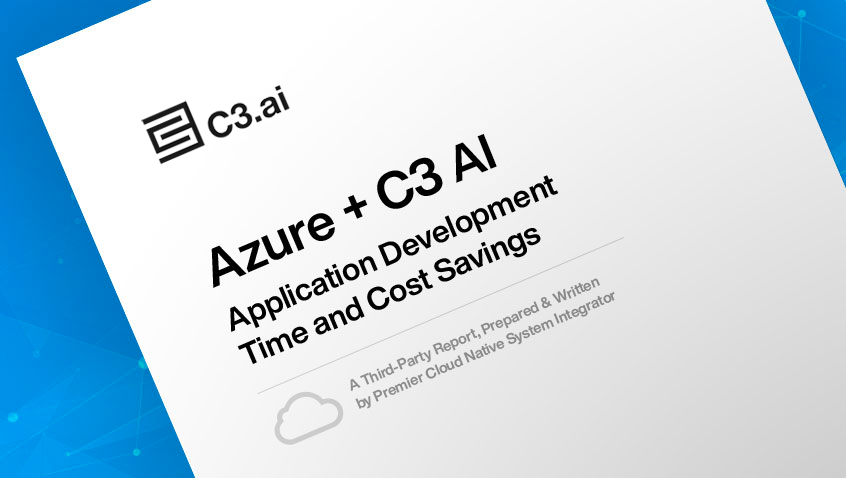- AI Software
- C3 AI Applications
- C3 AI Applications Overview
- C3 AI Anti-Money Laundering
- C3 AI Cash Management
- C3 AI Contested Logistics
- C3 AI CRM
- C3 AI Decision Advantage
- C3 AI Demand Forecasting
- C3 AI Energy Management
- C3 AI ESG
- C3 AI Health
- C3 AI Intelligence Analysis
- C3 AI Inventory Optimization
- C3 AI Process Optimization
- C3 AI Production Schedule Optimization
- C3 AI Property Appraisal
- C3 AI Readiness
- C3 AI Reliability
- C3 AI Smart Lending
- C3 AI Supply Network Risk
- C3 AI Turnaround Optimization
- C3 Generative AI Constituent Services
- C3 Law Enforcement
- C3 Agentic AI Platform
- C3 Generative AI
- Get Started with a C3 AI Pilot
- Industries
- Customers
- Events
- Resources
- Generative AI for Business
- Generative AI for Business
- C3 Generative AI: How Is It Unique?
- Reimagining the Enterprise with AI
- What To Consider When Using Generative AI
- Why Generative AI Is ‘Like the Internet Circa 1996’
- Can the Generative AI Hallucination Problem be Overcome?
- Transforming Healthcare Operations with Generative AI
- Data Avalanche to Strategic Advantage: Generative AI in Supply Chains
- Supply Chains for a Dangerous World: ‘Flexible, Resilient, Powered by AI’
- LLMs Pose Major Security Risks, Serving As ‘Attack Vectors’
- What Is Enterprise AI?
- Machine Learning
- Introduction
- What is Machine Learning?
- Tuning a Machine Learning Model
- Evaluating Model Performance
- Runtimes and Compute Requirements
- Selecting the Right AI/ML Problems
- Best Practices in Prototyping
- Best Practices in Ongoing Operations
- Building a Strong Team
- About the Author
- References
- Download eBook
- All Resources
- Publications
- Customer Viewpoints
- Blog
- Glossary
- Developer Portal
- Generative AI for Business
- News
- Company
- Contact Us
Glossary
- Artificial Intelligence
- AI Agents
- AI in Finance
- AI in Manufacturing
- Anomaly Detection
- Anti-Money Laundering
- Asset Performance Management
- Asset Reliability
- Demand Forecasting
- Digital Disruption
- Digital Transformation
- Digital Twin
- Elastic Cloud Computing
- Energy Management
- Enterprise AI
- Enterprise AI Platform
- Ethical AI
- Inventory Planning
- IoT Platform
- Know Your Customer (KYC)
- Machine Vision (Computer Vision)
- Model-Driven Architecture
- Multi-Cloud
- No Code
- Predictive Analytics
- Predictive Maintenance
- Process Optimization
- Production Scheduling
- Stochastic Optimization
- Supply Chain Management
- Type System
- Data Unification & Management
- Machine Learning (A to L)
- Artificial General Intelligence
- Bias
- Canonical Schema
- Canonical Transform
- Classification
- Classifier
- Classifier Performance
- Clustering
- Coefficient of Discrimination, R-Squared (R2)
- Convolutional Neural Network (CNN)
- Correlation
- Data Cleansing
- Data Labels
- Data Lineage
- Deep Learning
- Dimensionality Reduction
- Explainable AI
- F1 Score
- False Positive Rate
- Feature Engineering
- Feedback Loop
- Field Validation
- Gaussian Mixture Model (GMM)
- Generalized Linear Models
- Gradient-Boosted Decision Trees (GBDT)
- Features
- Ground Truth
- Holdout Data
- Hyperparameters
- Information Leakage
- LIME: Local Interpretable Model-Agnostic Explanations
- Linear Regression
- Loss Function
- Low-Dimensional Representation
- Machine Learning (M to Z)
- Mean Absolute Error
- Mean Absolute Percent Error
- Machine Learning Pipeline
- Model Drift
- Model Prototyping
- Model Training
- Model Validation
- Normalization
- Overfitting
- Precision
- Problem Tractability
- Random Forest
- Recall
- Receiver Operating Characteristic (ROC) Curve
- Regression Performance
- Regularization
- Reinforcement Learning
- Reporting Bias
- Ridge Regression
- Root Mean Square Error (RMSE)
- Selection Bias
- Shapley Values
- Supervised Machine Learning
- Tree-Based Models
- Underfitting
- Unsupervised Machine Learning
- XGBoost
Asset Reliability
What is an asset?
In the industrial context, an asset can refer to a single machine, a system made of multiple machines, an industrial facility made of a single or several structures filled with machines or large-scale infrastructure. Examples include among others, turbines, compression trains, aircraft, utility substations, offshore oil and gas production platforms, petrochemical plants, and telecommunication networks.
What is asset reliability?
Asset reliability, or asset health, is the ability for an asset to function as expected over a period of time without disruption. An asset is reliable or healthy when there is no unexpected downtime or repairs outside of scheduled downtime and maintenance.
Common measures of asset reliability include among others, percentage uptime, percentage available, mean time between failure, and mean time to repair.
Why is asset reliability important?
Healthy assets are integral to business continuity and operating margin. Reliable assets enable organizations to produce goods on time, control costs, and ensure operational safety.
With high asset reliability, organizations can:
- Increase uptime by reducing unexpected downtime.
- Increase asset availability by reducing unexpected repair time.
- Control costs by avoiding costly emergency repairs.
- Improve safety by reducing unnecessary and unexpected repairs.
Why use AI for asset reliability?
While operators are familiar with traditional reliability engineering techniques using data and technology to monitor reliability of assets, there is an opportunity to improve asset health outcomes by leveraging AI. Applying AI in the form of generative AI (i.e., large language models), machine learning, and optimization to real-time operational data on top of existing monitoring tools helps organizations maximize economic value and productivity by addressing limitations of conventional approaches.
Limitations of conventional monitoring approaches include:
- Siloed data systems that prevent holistic asset health visibility.
- Lack of predictive capabilities, resulting in no early warning of asset risks.
- Disjointed monitoring systems that rely on manual analysis and navigation.
- Separation of operational monitoring tools from operational knowledge that resides with domain experts.
- Difficulty in improving monitoring outcomes over time to incorporate learnings, similar problems, and advancements in technology.
How Does C3 AI Enable AI-Powered Asset Reliability?
AI-powered reliability solutions combine data, machine learning, and domain knowledge about asset operations to help organizations anticipate reliability risks, increase uptime, manage CapEx and OpEx costs, and improve productivity.
C3 AI provides a pre-built AI-powered predictive maintenance application, C3 AI Reliability, to help organizations improve asset reliability. The application unifies operational data from multiple sources, such as sensors, asset templates, maintenance records, and standard operating procedures, original equipment manufacturer (OEM) manuals, and applies advanced machine learning and generative AI techniques to identify equipment risks in advance and providing recommend actions to prevent unplanned downtime and emergency repairs.
Examples of customers using C3 AI Reliability to improve asset reliability include:
- Oil & Gas: Shell deploys C3 AI Reliability application to monitor more than 14,000 critical pieces of equipment across its global operations.
- Aerospace & Defense: The US Department of Defense deploys C3 AI Reliability application to predict subsystem failures in multiple aircraft platforms.
- Industrial Manufacturing: Georgia-Pacific, subsidiary of Koch Industries deploys C3 AI Reliability application to predict failure of manufacturing equipment.
C3 AI Reliability is used to monitor tens of thousands of assets in operation globally across these customers and many more.
The application is built on the C3 AI Platform, an end-to-end platform for developing enterprise AI applications. The C3 AI Platform provides a scalable and secure approach to enterprise AI. It provides the tools and capabilities required to rapidly design, develop, and operate advanced, industrial-scale enterprise AI applications.
The unique model-driven architecture of the C3 AI Platform allows organizations to build AI applications with less code, time, and effort than other approaches. It includes an end-to-end architecture to integrate with existing enterprise software systems, ingest into domain object models, apply out-of-the-box and configurable AI algorithms, and enable end user interaction in intuitive, simple user interface applications. C3 AI also provides a proven methodology and best practices for customer developers to configure, extend, and develop proprietary AI applications. C3 AI shares this methodology in a center of excellence collaboration model, delivering proven results as demonstrated through a decade of experience in working with some of the world’s largest organizations on industrial-scale use cases.



